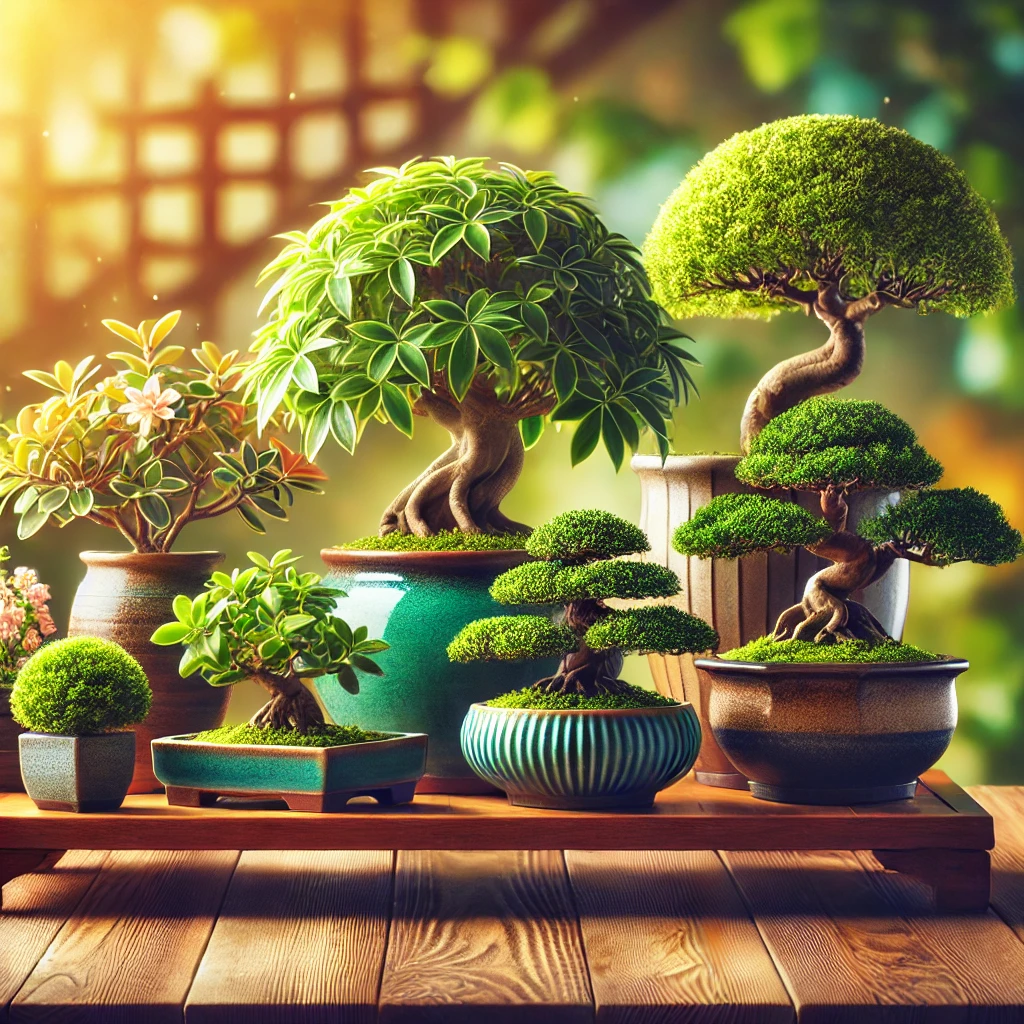Gardening, both indoor and outdoor, is all the craze these days. People appreciate bringing beautiful green friends into their house, along with colorful flowers to lift their spirits. In all this commotion, one of the plants that are left unattended and are underrated to a great extent happens to be the beautiful pots of cacti.
In the following article, we will bring to you the best options available in these thorny beauties and list the best indoor cactus plants (along with a few for your garden).
Best Indoor Cactus Plants
1. Christmas Cactus
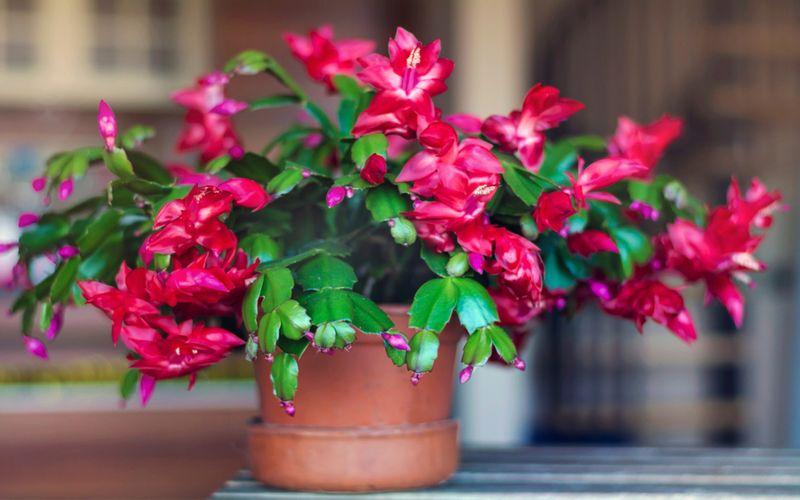
Botanical name – Schlumbergera bridgesii
This is a beautiful species of cacti that are found in 6 to 9 forms in the coastal mountains. As the name suggests, it blossoms into flowers around Christmas time. The plant blooms pink flowers at the end of trailing foliage.
Like most cacti, this one is fairly durable and is known to be easy to maintain. In addition to this, their blooming period is supposed to last for a very long time, over several weeks in some cases.
One thing you need to be careful about with this beauty is that you do not expose it to too much direct sunlight because it tends to damage the plant but the occasional direct sunlight along with the right amount of humidity always helps.
2. African Milk Tree
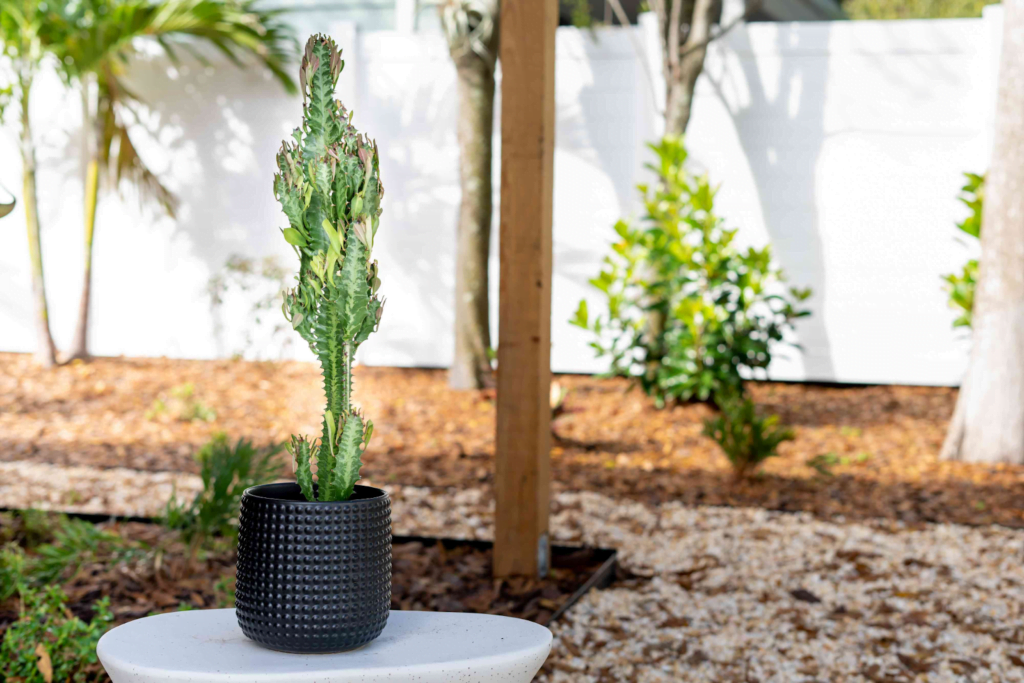
Botanical name – Euphorbia trigona
Euphorbia trigona is a perennial plant that gets its name from being a native plant in Central Africa. This is an upward-growing plant with thorny branches that are complemented with oval leaves that grow on the corners of these branches. These leaves end up being green or red, that entirely depends on the choice and nurturing of the cultivator.
The plant needs approximately 4 hours of indirect sunlight every day to grow into the beautiful plants we know them to be. In case of exposure to direct sunlight for long durations, make sure that you keep the plants moist because completely drying out tends to hurt the plant.
Be sure that you keep your pets out of sight because the leaves of this plant contain a milky latex that is considered very toxic and might harm your furry friends.
3. Rat Tail cactus
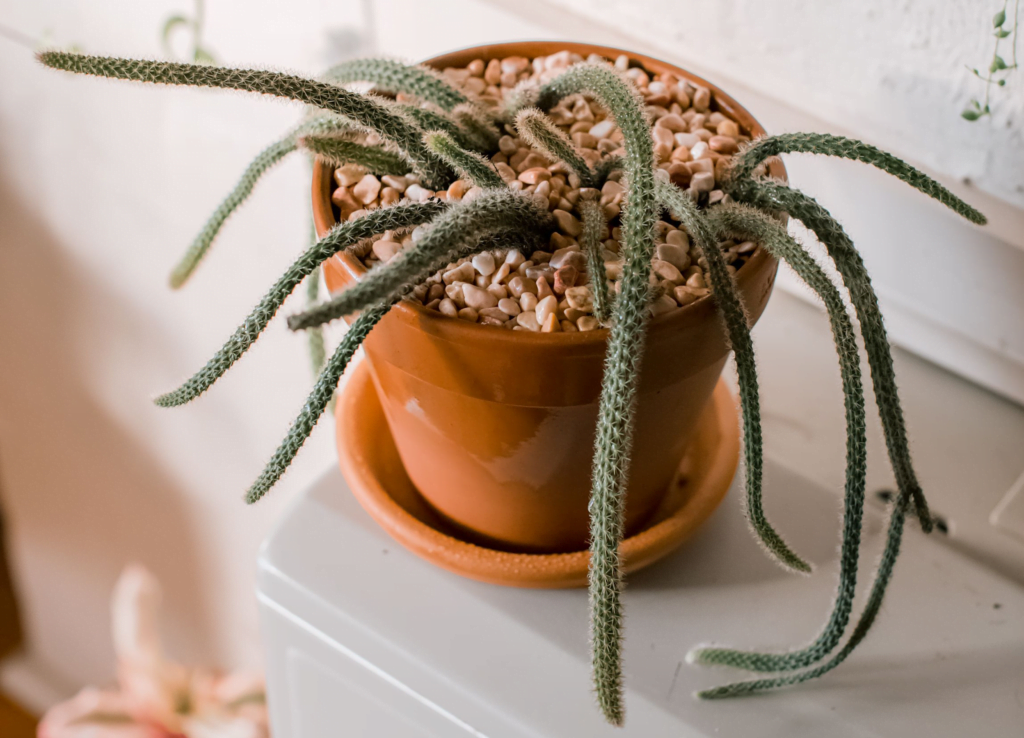
Botanical name – Disocactus flagelliformis
This is a gaudy variety of cactus known to be used as a showpiece. Native to southwestern Mexico and parts of Central America. This is considered a rather peculiar variety of cacti for it has distinctive, long, trailing stems which can grow up to 4 feet when it reaches maturity!
This charming beauty usually flowers in the spring and/or early summer and consists of violet-red blooms. If you are lucky, it will grow in showy colors of pink and orange. The flowers are large and tubular, about 2 inches wide.
These flowers are large in number but usually last for about 2-3 days at the most. The stems are also pretty but be careful that you don’t get pricked by the spines that grow out of them.
4. Old Lady Cactus
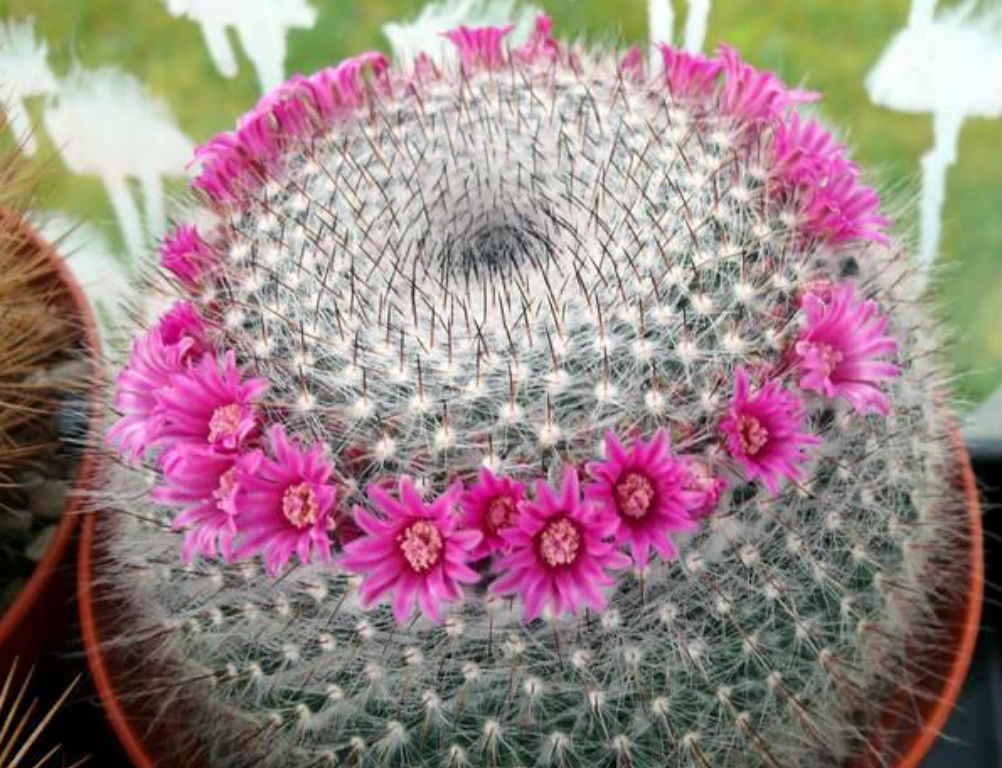
Botanical name – Mammillaria hahniana
This is a species of flowering cacti plant that is native to central Mexico. It is a solitary cactus with white fuzzy hair-like spines along with purplish-red flowers. They grow up to 25 cm tall and are twice as broad. Since it originated in Mexico, it has a protective covering of grey hair to protect it from the harsh desert sun.
Like most cacti, this species is very tolerant and can grow with very little care and attention. It won’t be angry if you forget to water it, just don’t make a habit of it. One needs to provide it with bright, even light to help with its growth and flowering process.
Due to its affinity for light, it is best suited for the window sill.
5. Barrel Cactus

Botanical name – Echinocactus grusonii
As the name suggests, this is a species of cacti that grows with a barrel-shaped body that is covered in rows of spines, ranging from yellow, tan, and red, all depending on the age of the plant.
Native to North and South America, this was originally an outdoor plant that could grow up to 2 feet tall. But since the last few years, they have been cultivated indoors.
Since they are native to the deserts, they are known to be fairly strong and sturdy and will not hold a grudge if neglected a little, the keyword being little and not a lot. Also worth mentioning, are the flowers that grow atop these round beauties when taken proper care of.
6. Fairy Castle Cactus
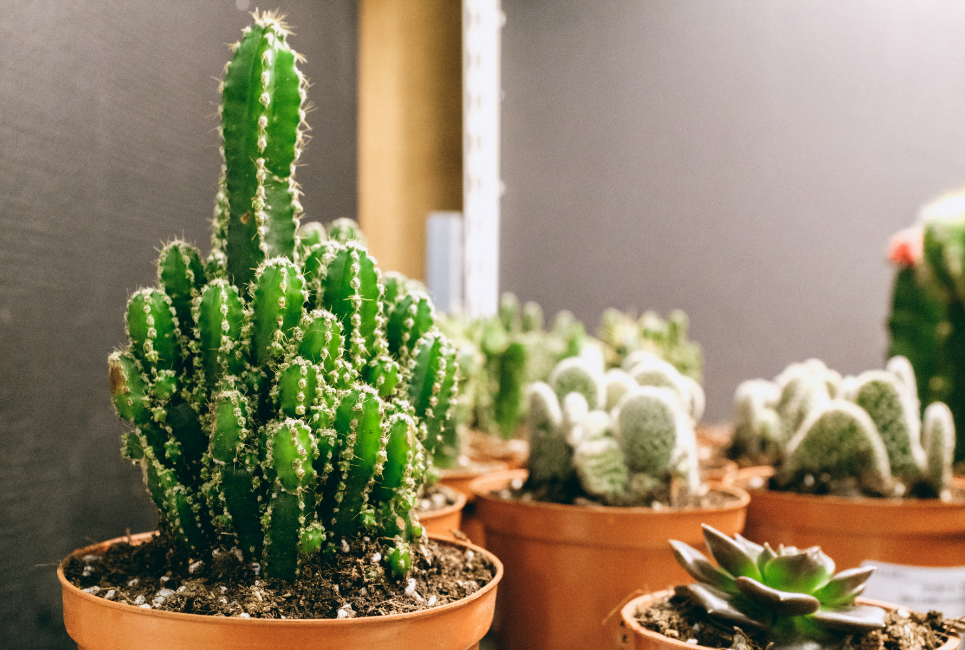
Botanical name – Acanthocereus tetragonus
This is the cactus that you know from cartoons and drawings. The colorful name definitely complements this vibrant plant. This is marketed and referred to by this name due to its numerous vertical stems of different heights that are very similar to spires and turrets.
The plant is fairly succulent and is made up of spines that bloom infrequently. Growing this thorny beauty inside your home makes up a very easy beginning gardener project for those of you who have just stepped into this domain.
This slow-growing plant has bright green limbs that turn woody and brown with time, thus adding character to your home. This is a full sun plant that requires well-drained soil, which allows the moisture to evaporate with ease.
7. Feather Cactus

Botanical name – Mammillaria plumosa
One of the most beautiful forms of cacti gets its name from all the white feathers that give the plant a soft and fluffy look overall and cover those dangerously sharp spines that cover this cactus. The “feathers” not only add interest to the cactus, but they also shade the plant from heat and sun.
The plant is fairly delicate compared to the rest of the cacti one has heard of because it cannot survive in cold and hardy environments and is dormant during most of the winters.
The plant should not be exposed to direct sunlight for long periods and usually thrive in partial shade and indirect sunlight. The plant can be propagated using cuttings, offsets, and seeds with great ease.
8. Bunny Ear Cactus
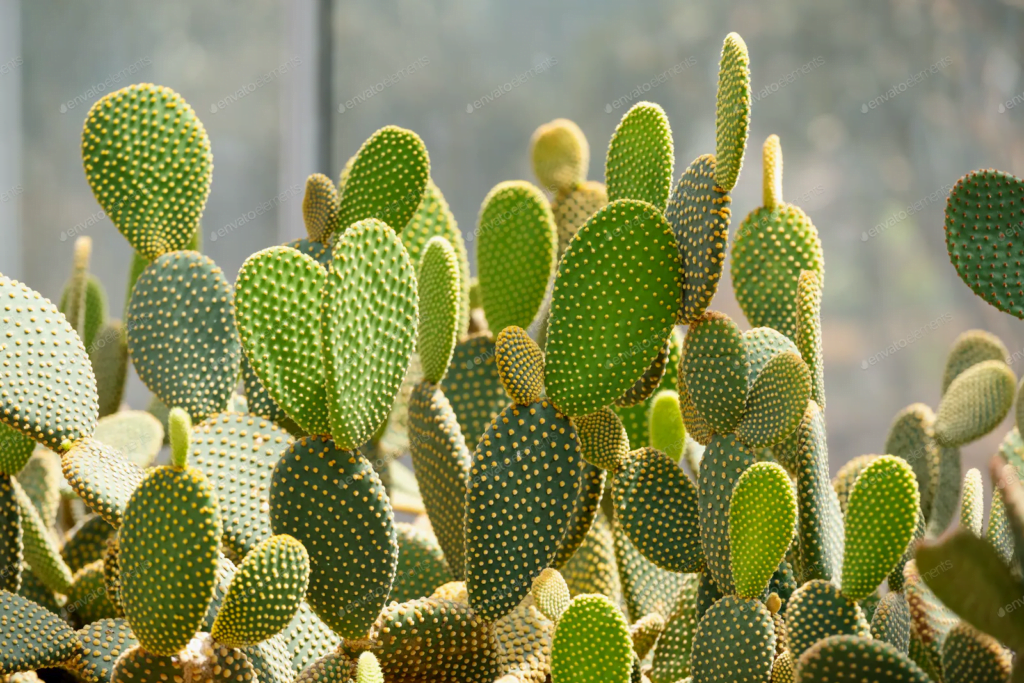
Botanical name – Opuntia microdasys
Bunny ear cactus or opuntia microdasys has become a very popular houseplant because it serves a dual purpose, of being an ornamental plant and not requiring a lot in terms of maintenance.
Native to Mexico, it is known by many names, inclusive of, but not limited to, angel’s wings cactus, polka dot cactus, etc. One should, however, not be fooled by this beautiful plant because this might look cute but the bunny ears hide very intimidating spikes which are just as prickly as the rest.
Before you get all your hopes up, you must know that the plant is mostly found in cartoons, because it is really hard to obtain an actual plant for purchase.
The bunny ear cactus requires consistent bright, direct sunlight and when grown as a houseplant, it should be placed in the sunniest spot in your home.
9. Moon Cactus

Botanical name – Gymnocalycium mihanovichii
If you like to maintain an overall flowery look in your house, this cactus might be just the right fit for you. Native to various parts of South America, these are a colorful group of succulents that lack the necessary chlorophyll to produce plant sugars through photosynthesis.
These are thus available in a wide variety of colors like hot pink, brilliant orange, and sometimes even neon yellow. These are generally about 1 cm across and are commonly considered gift plants because they make lovely window boxes and southern exposure ornaments.
Even the outdoor version of these takes shade from taller specimens, hence, they should be kept partially shielded from the scorching sun to help them grow to the best of their abilities.
10. Lady Finger Cactus
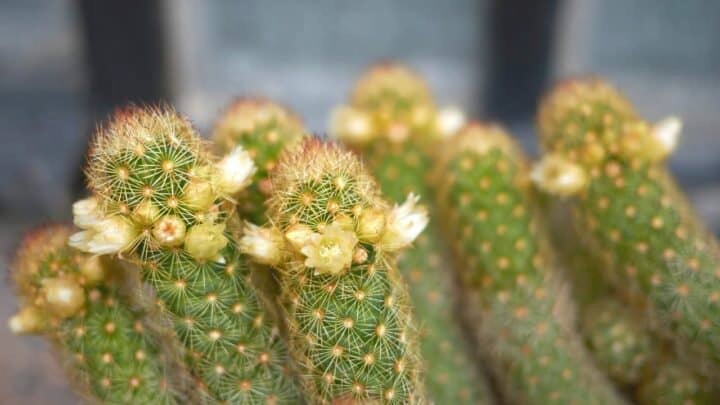
Botanical name – Mammillaria elongata
The perfect cactus for a beginner’s succulent garden, this enchantress is known for its long slender stems that look like the reminiscents of a ladyfinger. Its tubes form dense green and orange clusters, with light yellow or pink flowers in the Spring.
Even though the plant grows in an erect fashion when small, it starts appalling and sprawling as soon as it matures. It is typically known to have the water needs of a succulent and thrives the best in full sun to partial shade. Generally a spring plant, it is usually winter dormant.
And to add to the glory of this beauty, it is generally non-toxic to both humans and animals, so your furry friends have nothing to worry about.
11. Star Cactus
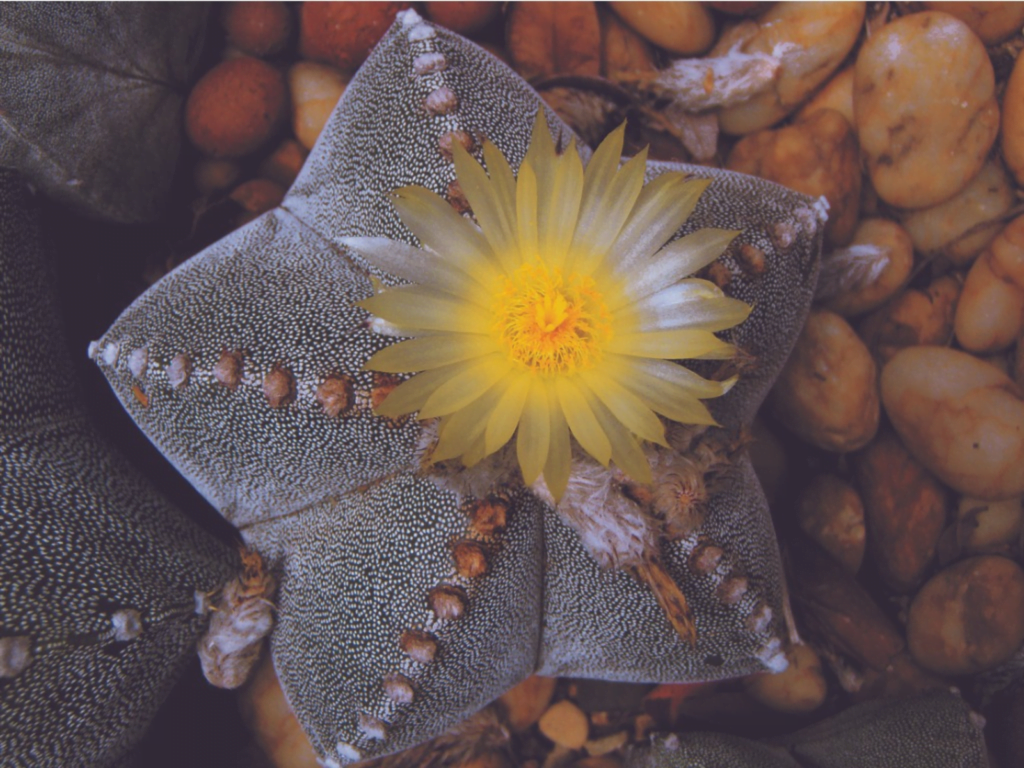
Botanical name – Astrophytum asterias
The name in itself paints a picture of this lovely round-bodied cactus resembling the shape of a star when looked at from the top. Its body is divided into sections and ribs that give it a shape that justifies the name.
The star cactus is a slow-growing, succulent houseplant that is quite famous among gardeners for its beautiful flowers that add glamour to its appearance.
This spineless cactus is an endangered species native to North America and is a low-maintenance plant that stands approximately 3 inches tall and 6 inches wide. The plant has yellow flowers with orange centers that typically bloom between March and May, making it a truly pretty spring for your house.
12. Parodia

Botanical name – Parodia magnifica
One of the best plants for small pots, Parodia or Parodia magnifica, is a short cylindrical plant that forms clumps. The stems of these plants are typically ribbed but are usually strongly tuberculate.
Indoor versions of this plant are thin and few, which is the opposite of the outdoor versions of the same. The flowers in this species of cacti bloom from the fuzzy buds present at the top of the plants. Flowers are cup-shaped and point straight up.
These flowers range in colors, from yellow to red, and always end up blooming in the nighttime of the summer season and also release a sweet, pleasing fragrance to cheer up the entire house. Enjoy these beauties that add a little character to your entire house.
Best Outdoor Cactus Plants
1. Beavertail Cactus

Botanical name – Opuntia basilaris
Beavertail is a variety of prickly pear which consists of pads that are usually blue-green. The cactus has dark pink flowers, the color of cherry that almost glows and smells like watermelon.
It is known to grow up to 20 inches high and up to 6 feet wide. This plant blooms from late winter to early summer and is ideal for desert landscaping and drought-tolerant gardens.
The plant typically thrives when it is completely exposed to the sun and benefits when it is fertilized once a year, with a diluted cactus fertilizer. The soil in which the plant is grown should be well-drained, in the form of loam or sand. The cactus grows best with Angelita daisy and barrel cactus.
2. Blue Flame Cactus
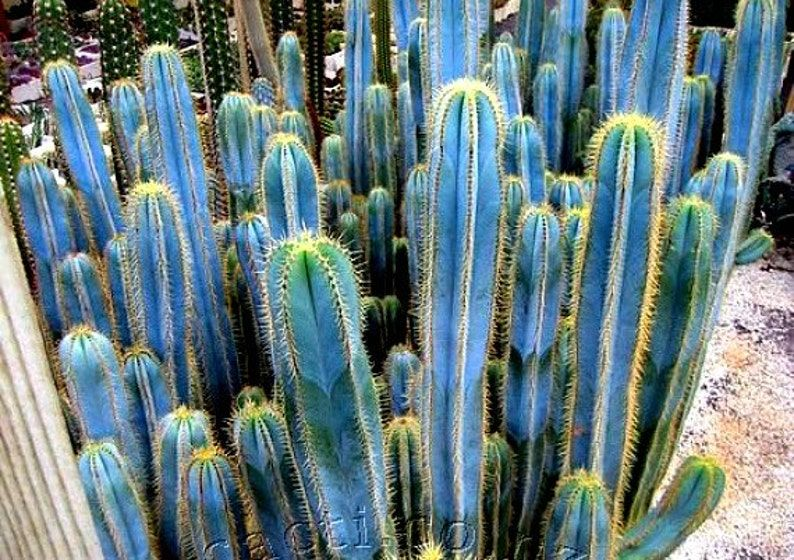
Botanical name – Myrtillocactus geometrizans
Myrtillocactus geometrizans or blue flame cactus go by multiple names, such as garambullo, bilberry cactus, or whortleberry. The plant is usually 15 feet high and has a width of about 6 to 10 feet wide but the crested species are usually smaller than the usual giants.
In its natural habitat, blue flame forms dense, cactus forests.
Most recognized for its upright candelabra shape, blue-green color, and purple fruit that happens to both look and taste like a cross between cranberry and blueberry. Like many outdoor species of cacti, this one is stunningly staged with gravel mix and rocks in a container.
Also what helps the plant’s growth is exposure to full sun for a better growth spurt.
3. Candelabra Cactus

Botanical name – Myrtillocactus cochal
This species of cactus is known to be 10 feet tall and similar in diameter across. They have cup-shaped flowers that are open during the day and shout their petals in the evening with fruits that are edible even though they have sort of an acidic aftertaste.
In its native habitat, candelabra cacti grow on hillsides, so planting on slopes gives it a natural look.
The cactus, like most others, is mostly known to be drought resistant and durable, but will always benefit from a little extra irrigation during the hottest part of the summer season. Usually ivory in color, a little exposure to the sun is always great for this variety of cactus.
4. Claret Cup Cactus
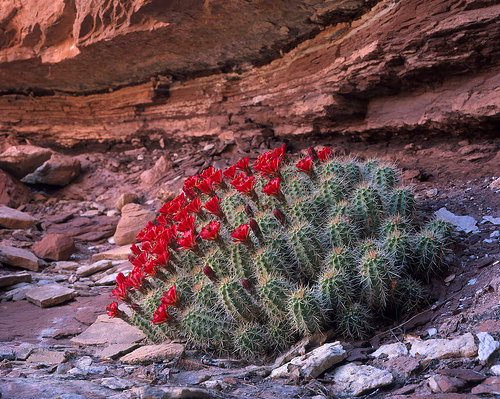
Botanical name – Echinocereus triglochidiatus
Also known as the hedgehog, Mojave mound cactus, and kingcup cactus, the claret cup cactus is an outdoor variety of cacti that hold the potential to grow to a height of 3 feet and spreads about 6 feet wide.
It usually bears fruits that turn bright orange when it ripens, are juicy, and taste a lot like strawberries.
Claret cup cactus prefers soil that usually contains more gravel than traditional cactus/succulent mixes. The bright red color shines best when the plant is exposed to bright sun and can survive in drought-like conditions too.
The best possible soil for this backyard beauty is that of volcanic origins. Don’t deprive yourself of this outdoor ornament.
5. Golden Ball Cactus

Botanical name – Parodia leninghausii or Notocactus leninghausii
Golden ball cactus, which also goes by yellow tower or lemon ball cactus, have been known to grow about 3 feet tall. This usually grows to form clusters which makes it a smart choice for fire-resistant landscaping, also a quality of many other cacti. Not to be confused with the golden barrel cactus, the golden ball starts out globular in shape, then becomes more columnar.
An excellent choice for gardeners just beginning with cacti, this yellow tower works best if it gets some shade during the hottest hours of the day. The yellow spines of this adorable plant thrive the most in the rich, fast-draining cactus mix.
This plant is a perfect addition to your cacti family and easily manageable for sure.
6. Golden Barrel Cactus
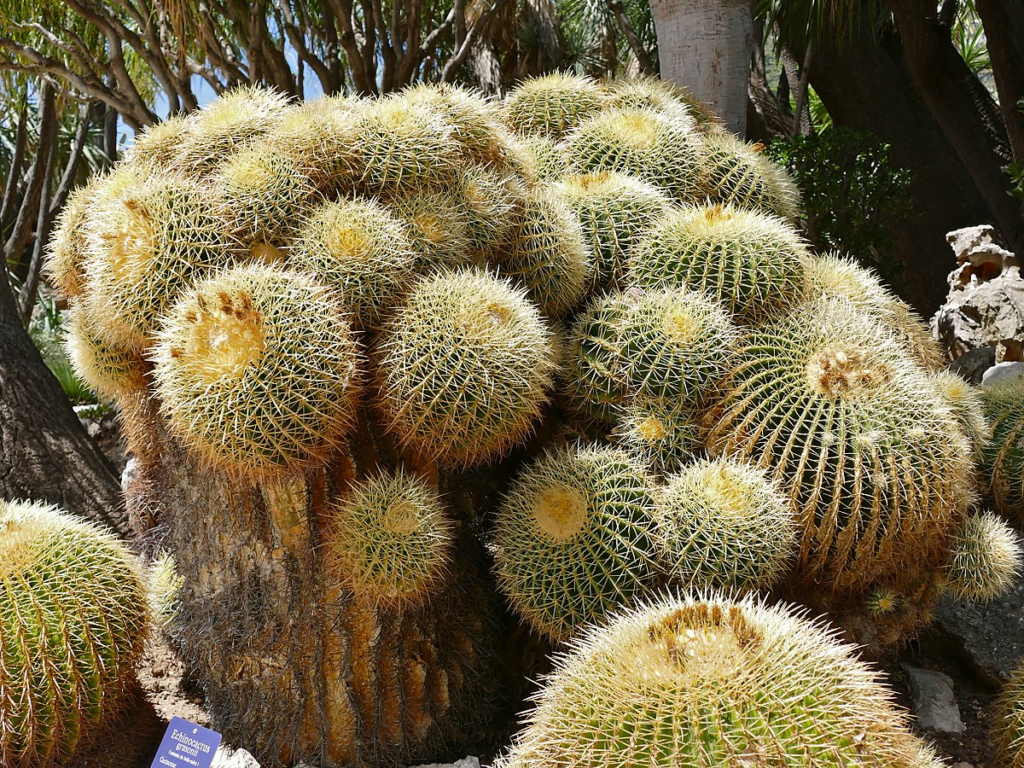
Botanical name – Echinocactus grusonii
Not to be confused with the last mention on the list, this iconic beauty of a round cactus is easily recognizable and probably the most popular type used in drought-tolerant areas. The plant has a full-grown height of about 4 feet.
These are one of the most beautiful cacti for your garden. For maximum effect, plant several in a grid for visually striking landscape design in a front or backyard.
Although the younger saplings tend to prefer a little light shade, once they mature, the golden barrel grows best in full sun, not unlike many of the other cacti we talked about. The golden yellow garden ornament thrives the most in the rich, fast-draining cactus mix.
7. Strawberry Hedgehog Cactus
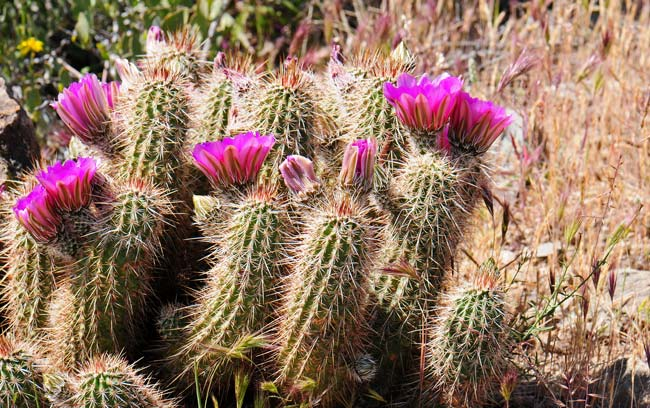
Botanical name – Echinocereus engelmannii
The strawberry cactus, saint’s cactus, purple torch, or Engelmann’s hedgehog cactus, also known by its common name strawberry hedgehog cactus. Unlike most outdoor cacti, these lovelies are tiny and have free-branching clusters or mounds of erect stems that are sometimes prostrate, it reaches the height of about 28 inches.
All Echinocereus have ornamental spines which usually densely cover the surfaces of the plants and are extraordinarily pointy.
The cactus looks its best in rock and also in drought tolerant gardens along with a lot of other succulents and wildflowers. Outdoor versions of these plants can tolerate light shade but if you want to grow this one indoors in a container, remember to give it the sunniest spot in your house.
8. Mexican Fence Post Cactus
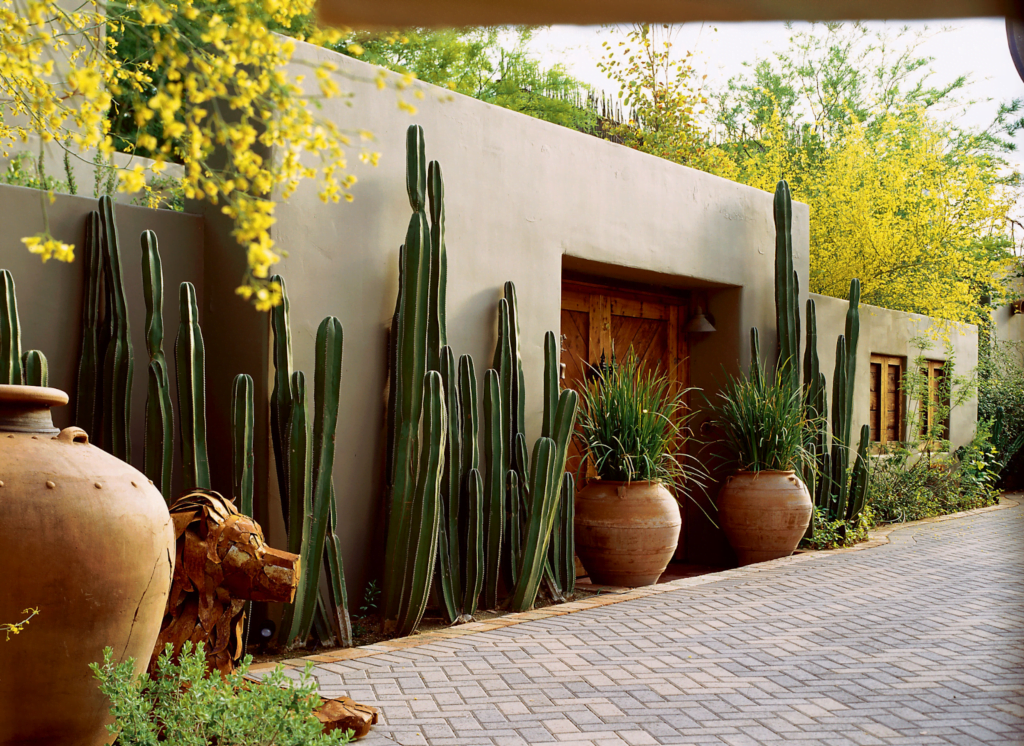
Botanical name – Pachycereus marginatus
Native to the country where it gets its name, this cactus usually grows to a height of about 16 feet. Individual stems are 3 to 8 inches in diameter. It makes your spring delightful by blooming in mid-to-late spring and is evident along the cactus’ ribs near the growing tip and down its sides.
This plant tends to respond well to frequent watering when it is hot and uncomfortable outside. When it is frosty, you need to protect the plant by placing Styrofoam cups or burlap over growing tips.
This reddish-pink cactus responds best to full sun and grows the best when planted in well-drained soil.
9. Mammillaria
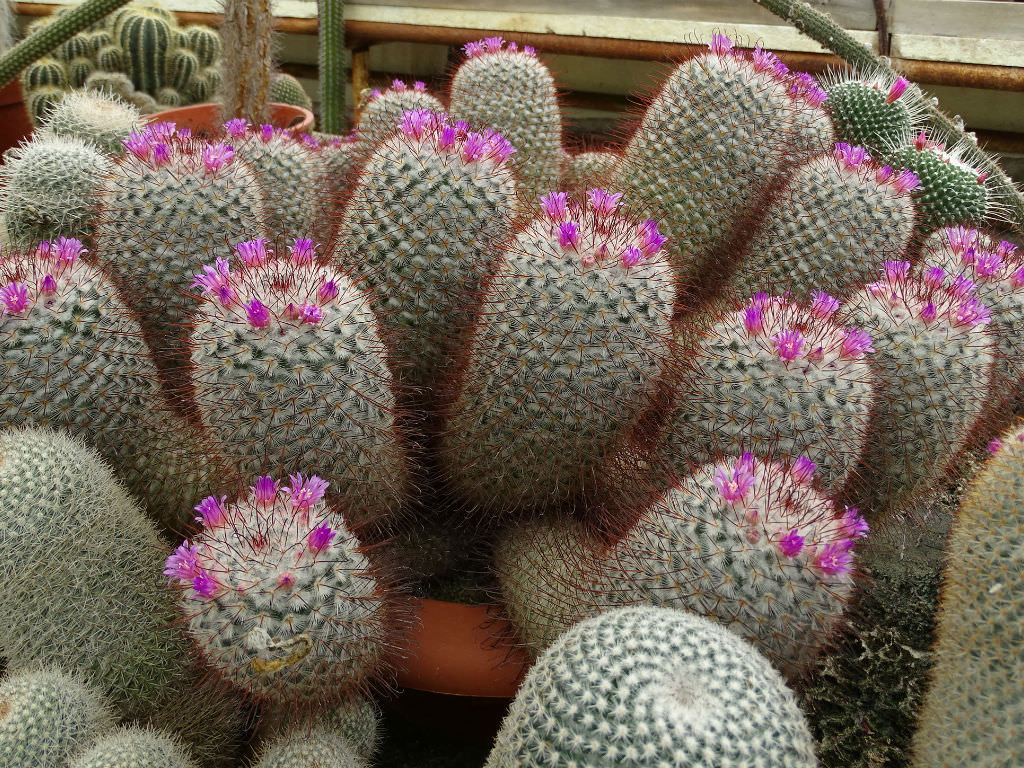
Botanical name – Mammillaria Polyhedra
With over 300 species that are native to Mexico, with the others native to the southwestern United States, the Caribbean, Central America, and South America, this cactus grows up to 12 inches tall and 5 inches wide, it possesses 1-inch blooms.
This one starts out as an individual plant, then eventually forms dense clusters.
Unlike most cacti, this cactus should not be kept in direct sunlight for over 4 hours each day. Bright but indirect works wonder for sure! They are grown in a rich, fast-draining cactus mix that helps the white red flowers bloom very beautifully.
10. Old Man Cactus

Botanical name – Cephalocereus senilis
The old man of Mexico, or the old man cactus/ cousin it (a reference to a character in The Addams Family television show). This is one of the most popular cacti, this kind of cacti can be distinguished by its tall, columnar, or branching growth and is often covered by long, woolly hair.
The species are known best to propagate easily from seeds or cuttings. Some collectors keep on washing the “hair” of these beauties to keep it white. Old man cactus can reach the height of about 40 feet, and its side stems produce blooms at night in mid-spring after it reaches heights of 20 feet or more.
11. Orchid Cactus

Botanical name – Epiphyllum hybrids or Phyllocactus
Native to tropical Americas, the orchid cacti usually grow as long as 225 feet. Remember that this is not the case if you live in a nontropical region because the proportions are quite small in such a case.
The flowers on this cactus are always admired for their adorable 4-inch blooms and are primarily grown in hanging baskets, much like other orchids.
You can hang this cactus from the branches of large trees; they will benefit from the light and fresh air. The flowers are pinks, reds, whites, yellows, oranges, and shades in between when grown in potting soil made with the amalgamation of peat and sand.
12. Organ Pipe Cactus
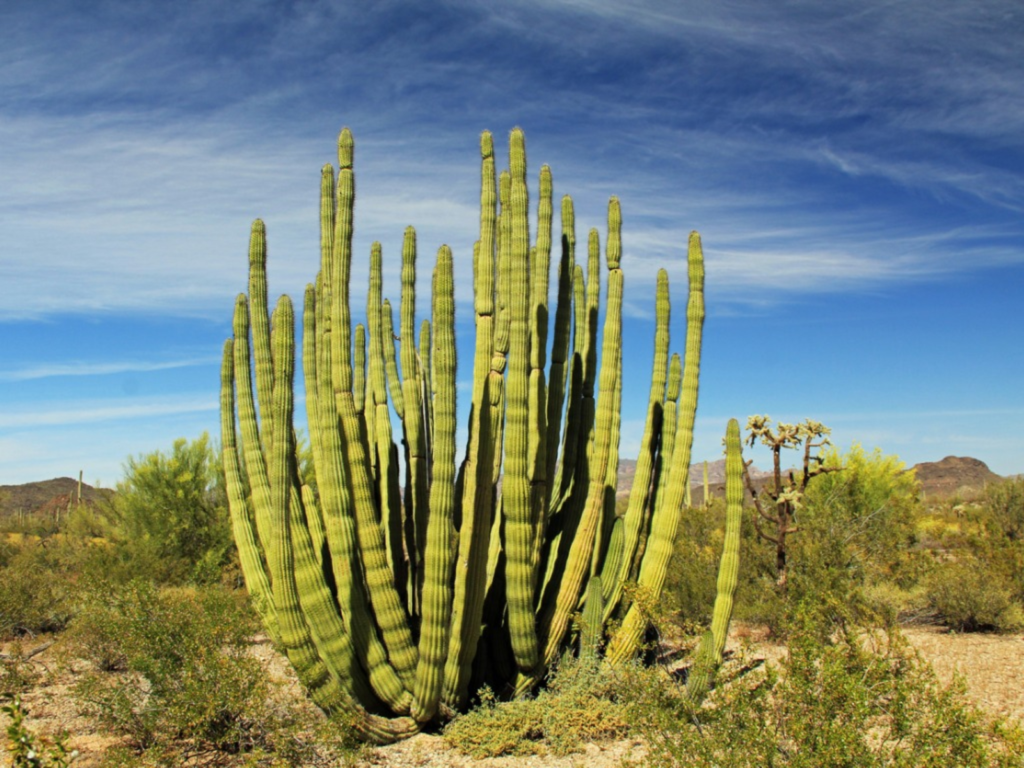
Botanical name – Lemaireocereus thurberi
Also known as pitayo dulce or Arizona organ pipe, this cactus looks like old-fashioned organ pipes, the stems on this plant resemble sausage links. These are columnar and tall and branch slightly above ground into several ribbed stems.
Native to the Sanora desert regions of North America, these cacti survive in the sun and minimum winter temperatures.
These plants can reach heights of 30 feet with clumps just as wide, although they don’t get this giant in most gardens, with flowers that bloom in the evening and close at dawn during the spring.
13. Peanut Cactus

Botanical name – Chamaecereus silvestrii or Echinopsis chamaecereus
This is a low-growing, cylindrical cactus that is known to reach heights of about 1 foot. These are flowers of the spring that keep blooming through early summer. Peanut cactus prefers shallow containers and grows well in rock gardens and xeriscapes.
The plants work best in full sun but enjoy the partial shade when exposed to extreme heat. They need well-drained, gritty soils to thrive the most.
Conclusion
From all this discussion, one thing we gather is that cacti are thorny beauties that thrive, even when neglected a little, and always end up adding character to your abode with their unique flowers, textures, or shape.
Hence, we see no reason why they are sidelined and they deserve a place in your garden or house.
Related Articles
- How to Choose the Perfect FRP Planter for Your Indoor Spaces
- Signup & Login to Abana Homes
- The Ultimate Guide to Buying Bonsai Plants: What to Look for and Where to Buy
- Boost Your Garden’s Health: 5 Key Reasons to Start Mulching Today
- Propagating Chinese Elm Bonsai Cuttings And From Seeds
- Best Chinese Elm Bonsai Soil and Fertilizer.





